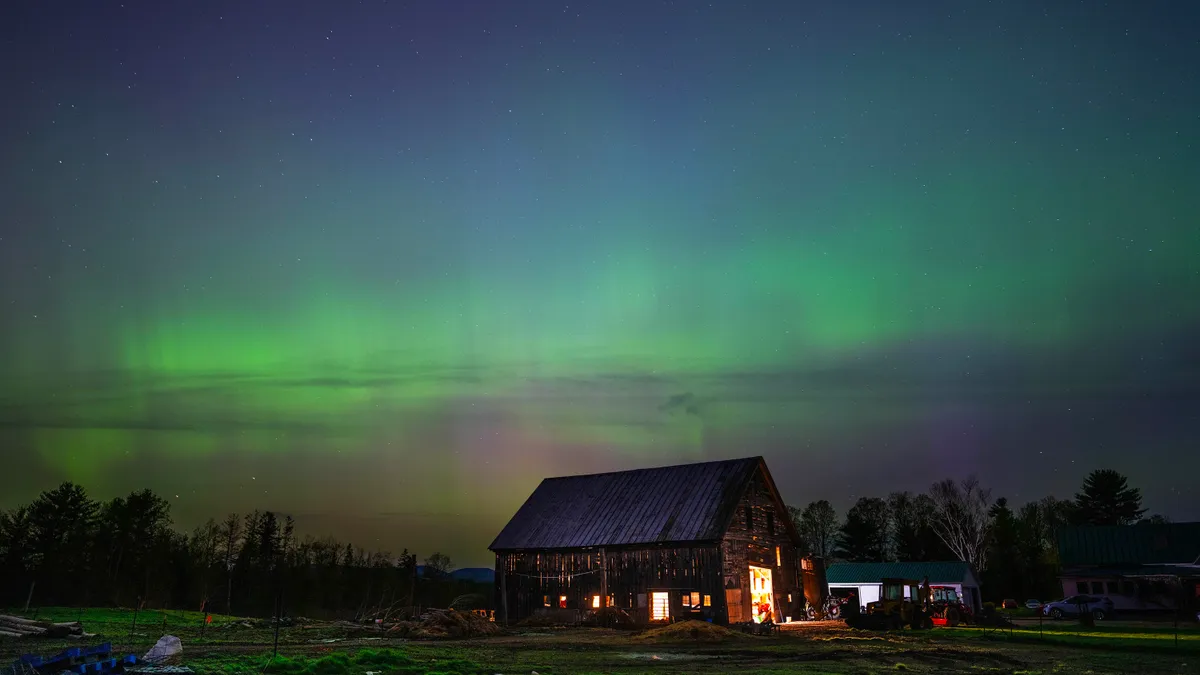A powerful solar storm over the weekend that produced a dazzling display of northern lights also disrupted farm equipment navigation systems, interrupting operations at the height of planting season.
The geomagnetic storm, the strongest in over two decades, interrupted GPS systems that are used to inform planting decisions and keep rows straight with exact precision. Some farmers had no choice but to temporarily halt operations after the technology struggled to locate their position.
"I saw stuff on Friday I’ve never seen before," one farmer wrote on Reddit. "We’re striptill farmers so in order for the planter to follow the strip tiller we need 1” accuracy. Wasn’t happening."
A series of updates from John Deere dealership LandMark Equipment on Friday advised customers to turn off tools using GPS and real-time kinematic to prevent the tech from receiving conflicting signals from the geomagnetic storm. LandMark said Deere's AutoPath tool, which uses historical data to create guidance lines for secondary passes such as spraying and harvests, may be difficult for farmers who were out working during the solar storm.
"When you head back into these fields to side dress, spray, cultivate, harvest, etc. over the next several months, we expect that the rows won't be where the AutoPath lines think they are," LandMark said in an updated advisory Saturday. "It is most likely going to be difficult — if not impossible — to make AutoPath work in these fields as the inaccuracy is most likely inconsistent."
Deere technologies most affected by the storm were those that relied on the more precise RTK, including the StarFire 3000 and 6000 receivers. Systems using RTK are constantly recalibrating to correct errors and provide pinpoint accuracy.
LandMark said RTK systems saw more "bad" corrections coming in, which "created more inaccuracy." The problem extended to all GPS systems, not just Deere's technology.
The National Oceanic and Atmospheric Administration said Saturday the storm was the “most extreme” since 2003 when intense solar flares disrupted satellite TV and radio services. Along with GPS and satellite navigation, impacts also extended to power grid irregularities and high-frequency communication.
While the solar storm is considered a one-off event, it raises questions about the future reliability and security of agriculture technology as farmers increasingly adopt digital solutions, according to Curt Covington, senior director of institution credit at AgAmerica Lending. The event could also deter some farmers from adopting technology down the line.
“If anything came from this, it’s the importance of being proactive in protecting our food system and having a response plan in place to avoid large-scale disruption,” Covington said in an email to Agriculture Dive.
Editor’s note: This story has been updated to include comments from AgAmerica Lending.










